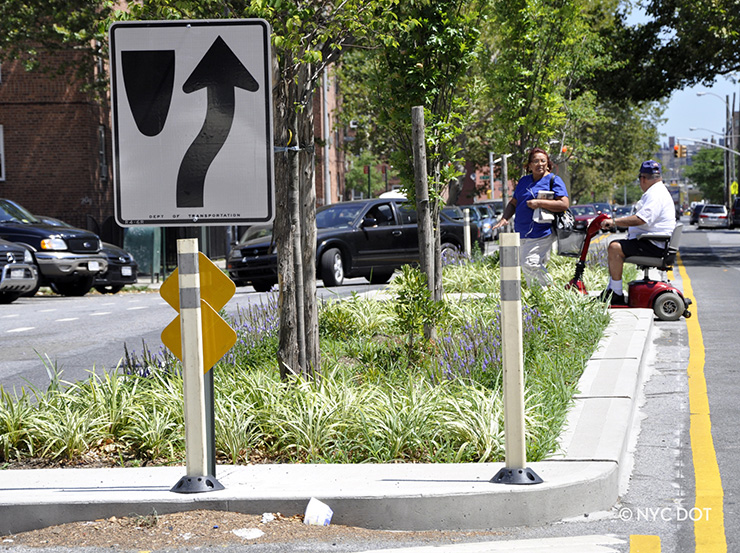Resiliency
NYC DOT aims to strengthen New York City communities and infrastructure to be more resilient in a changing climate. Our Resiliency Planning & Management unit, which sits within the Budget and Capital Program Management division, manages the design and implementation of resiliency infrastructure projects. The unit also develops resiliency policy for the agency.
Resiliency is important to all functions of NYC DOT. We track climate risks facing our diverse assets, from streets and sidewalks to bridges and street lights. Our capital projects also rely on the latest climate resilient design guidelines. These guidelines help ensure that the projects we build today can withstand the climate threats of tomorrow.

Climate Impacts to Transportation
Coastal Flooding

In 2012, Hurricane Sandy caused unprecedented impacts to NYC, including 44 deaths and flooding in 88,700 buildings. 2 million residents were without power for weeks. Wave action and saltwater intrusion caused significant disruption to roads and tunnels. In total, NYC incurred $19 billion of damages. NYC DOT has been a proud partner in NYC’s efforts to build new coastal flood barriers across the city to protect our neighborhoods from future disasters.
Sea Level Rise

NYC is projected to experience up to 6’ of sea level rise by the end of the century. Especially low-lying neighborhoods are already flooded by high tides today. High tides cause travel disruptions for cars, bikes, and pedestrians. NYC DOT is working toward roadway design that can help these areas adapt to rising tides.
Heavy Rains

In 2021, Hurricane Ida record-breaking 7 inches of rainfall. Because of the flash flooding, 13 people lost their lives. Thousands of New Yorkers were stranded as transportation services shut down. Countless others experienced devastating flood damages to their homes. To help New Yorkers prepare for this “new normal,” NYC DOT is implementing new cloudburst and green infrastructure projects to convey, detain, and store stormwater.
Extreme Heat

Extreme heat is the leading cause of mortality from extreme weather in NYC. Heat-related impacts take a significant toll to the health of New Yorkers. Disproportionately affecting communities of color, the elderly, and people who lack access to air conditioning. In a year NYC reports an average of 450 emergency room visits, 150 hospitalizations, and 115 excess deaths.
Key Projects
East Side Coastal Resiliency (ESCR)
The East Side Coastal Resiliency (ESCR) project includes 2.5 miles of flood protection consisting of berms, flood walls, and flood gates. The project will raise East River Park and include all new park amenities for the community.
Brooklyn Bridge-Montgomery Coastal Resiliency (BMCR)
The Brooklyn Bridge-Montgomery Coastal Resiliency (BMCR) provides about one mile of flood protection that runs under FDR Drive along the East River Esplanade. This project consists primarily of flood gates that can be flipped up advance of a storm, but lie flat in the ground during blue-sky days so that the community can enjoy unobstructed waterfront access. Project will also integrate new playground and recreational amenities along the esplanade.
